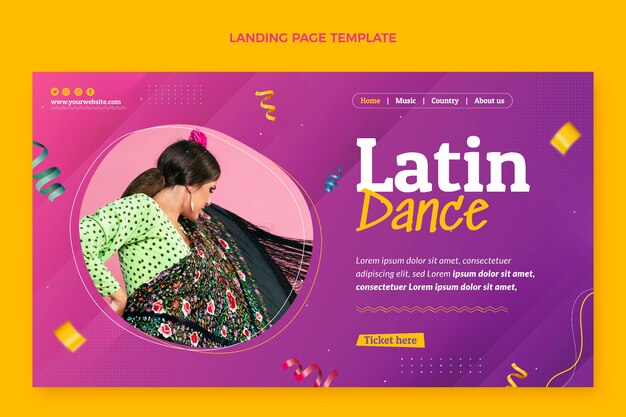Album of Dances and Traditional Dances: A Glimpse into Honduran Culture
Honduras, located in the heart of Central America, has a rich and vibrant cultural heritage reflected in its traditional dances and music. The “Album of Dances and Traditional Dances of Honduras” offers an authentic journey into the country’s history, beliefs, and values, celebrating its diverse indigenous, African, and Spanish influences. This article explores the most iconic dances included in this album, the cultural meanings behind them, and how these performances are integral to preserving Honduran identity.
1. The Role of Dance in Honduran Culture
Dance in Honduras is not just a form of entertainment but a powerful means of storytelling and tradition. Each movement and step embodies the spirit, struggles, and joys of different communities across the country. Through these dances, Hondurans preserve their heritage and communicate values and history to younger generations.
2. Garífuna Influence on Honduran Dance
One of the most significant cultural influences on Honduran dance is the Garífuna community, a group descended from Afro-Caribbean and indigenous ancestry. Their rhythms, movements, and songs have contributed tremendously to the traditional dance scene, embodying resilience and joy.
3. Punta: The Dance of Celebration
Punta is one of the most popular dances of the Garífuna people and is a staple in the Honduran dance album. Known for its fast footwork and energetic movements, Punta celebrates joy, community, and resilience. Dancers typically perform barefoot, embodying a deep connection to the earth, and the beats are driven by Garífuna drums that pulse with infectious rhythms.
4. The “Guancasco”: A Ritual of Peace
Another highlight in the album is the Guancasco, a traditional dance and ceremony rooted in pre-Columbian indigenous practices. The Guancasco serves as a ritual of peace and reconciliation between communities. Wearing intricate costumes, dancers move in harmony, symbolizing unity and mutual respect, and often conclude with a ceremonial exchange of goods.
5. The “Danza de los Diablitos” (Dance of the Little Devils)
This dance is a unique fusion of indigenous and colonial Spanish elements. In Danza de los Diablitos, performers wear masks and costumes representing devils, saints, and other spiritual figures. The dance symbolizes the ongoing battle between good and evil, often performed during festivals. Its striking costumes and powerful storytelling make it one of the most visually stunning dances in the album.
6. La Tusa: A Dance of Harvest and Gratitude
La Tusa is a traditional dance centered on the corn harvest, a staple food in Honduran culture. This dance is particularly popular among rural communities and symbolizes gratitude for the bounty of the land. Dancers wear costumes made from corn husks and move in unison, depicting the process of harvest and offering thanks to the earth for its abundance.
7. The Mayan and Lenca Heritage in Dance
The Mayan and Lenca indigenous communities have left a lasting mark on Honduran dance, with intricate steps and sacred movements that pay homage to nature and ancestral spirits. This album of dances includes Lenca dances like the Danza del Venado (Dance of the Deer), performed in honor of nature’s cycles and representing respect for wildlife and the natural world.
8. Folkloric Dance of Honduras
Folkloric dance in Honduras is a blend of European, indigenous, and African elements. Traditional dances like El Sueñito (The Little Dream) reflect romantic themes and courtship, often performed in vibrant costumes that highlight Honduran textile artistry. These dances are typically performed during national festivals and showcase the elegance and grace of Honduran dance tradition.
9. The Impact of Spanish Colonial Influence
Spanish colonization introduced European musical instruments and dance styles to Honduras. These influences merged with local traditions to form new styles, like zapateado (a foot-stomping dance). This fusion of Spanish elements into indigenous dances reflects the complex cultural history of Honduras, visible in the album’s diverse selection of dances.
10. Modern Interpretations of Traditional Dances
In recent years, Honduran artists have created modern interpretations of traditional dances, bringing them to contemporary audiences. By blending old and new styles, these artists ensure that Honduras’ cultural heritage remains relevant, drawing in younger generations and visitors from around the world.
11. Costumes and Instruments: A Visual and Auditory Feast
Each dance in the album is brought to life with traditional costumes and instruments. Garífuna drums, marimbas, and flutes provide the soundtrack, while costumes range from vibrant skirts and scarves to intricate masks and accessories. These elements transport the audience into the rich cultural landscapes of Honduras.
12. The Album as a Cultural Archive
The “Album of Dances and Traditional Dances of Honduras” serves as more than just a collection; it is a cultural archive. Through detailed descriptions, photographs, and historical notes, the album offers an invaluable record of Honduras’ traditional art forms, preserving them for future generations.
13. Why Traditional Dance Matters
Traditional dance allows people to connect with their roots, offering Hondurans a profound way to express identity, unity, and pride. It brings communities together, honoring the legacies of their ancestors, while also welcoming change and evolution in how dance is performed and understood.
14. Teaching Dance: Passing Down the Legacy
Many communities in Honduras have established dance schools and programs focused on preserving traditional dance styles. These schools play a critical role in keeping the knowledge of dance alive, passing it down to the next generation and instilling a love for their cultural heritage.
15. Conclusion: Embracing and Celebrating Honduran Heritage
The “Album of Dances and Traditional Dances of Honduras” is a tribute to the resilience, beauty, and diversity of Honduran culture. From the energetic beats of Punta to the ritualistic movements of the Guancasco, this album reminds us that dance is a universal language and a vital expression of national identity. Through each step and every melody, Hondurans celebrate their past and look forward to a future where these traditions will continue to thrive.

